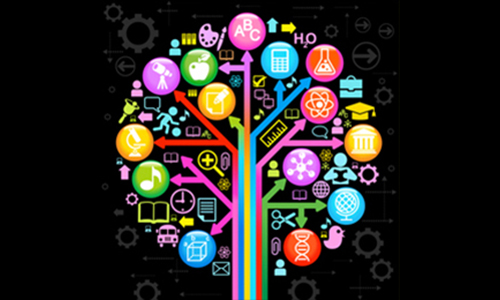21t4s Teaching Resources

Introduction
This section provides videos and steps to help you become familiar with the additional teaching resources provided on the site.
1. Watch this short video introduction to Getting started with the teaching resources for the 21things4students; Start page, registration, teaching guides, accommodations, and assessment. (5:44)
2. Open the main 21t4s page select "TEACHERS" and view the "Teacher Start Page" to learn about each of the following:
a. The 21t4s Roadmap
b. The Teacher Handbook
c. The Syllabus
2. Pacing and Management: Consider how you might address pacing and managing: student work, devices they will use, your delivery method, tool selection, and access to the URLs and videos used. (additional resource for tips and strategies)
3. Register: visit the Teacher Registration page and complete the registration survey. This list is NOT provided to others, and is only used to provide basic statistics to REMC, our funding source. Note: At the end of the registration survey is the username and password to login to the Teacher Resource login page.
4. This video covers Feedback & evaluation, Graduation page details, and Competencies & Standards. (2:40)
5. Assessments
An important part of the Teachers resources provided are described on the drop-down menu: Assessment. Visit the page and look at each one for more information.
This video looks at the Teacher Resource Login section that includes the assessment bank questions, quiz answers, syllabus, URL list, reporting a bad link, digital badges, course management systems, and Updates page. (3:20)
- Pre- and Post- assessment Bank (see below for additional information)
- Portfolios of student work: The Student Showcase Digital Portfolio
- ProProfs multiple choice quizzes located on the Thing Graduation Pages
- Quizlet Key Vocabulary Quizzes in 21things4students and additional online quiz
tools. - Rubrics
- Breakout Activities (New Spring 2022) Some of these activities have been added to Quests. What is a Digital Breakout? See some examples on the March-April 2022 Updates.
- Learning Checks (New Spring 2022) these interactive sets of questions that are found at the bottom of some of the Quest pages.
Pre and Post Assessment Bank
An assessment bank has been created that includes both ProProf questions (from the graduation page quizzes) and additional questions by Thing and Quest level. The bank is in two forms: a spreadsheet with a different tab for the questions for each Thing, and also this Google doc that has directions for using our template to create your own quizzes in Google Forms. Once you have copied the Quiz form you can edit the questions, delete some, or add your own.
The purpose of the bank is to provide resources for teachers to create pre-and post-assessments. You will note that Column A contains a "Yes" or "No" as to whether these questions are in ProProfs (eg., the quizzes located on the Thing graduation pages).
6. Awesome Index to all Things and Quests
This part covers the Awesome Index and the K-5 MiTechKids.org site. (3:20)
7. 21t4s teacher listserv
Join the 21things4students teacher listserv if you wish to keep up to date on new information. Send a blank email to 21t4teach-l+subscribe@remc.org.
8. Learning Check Quiz
Take this Quiz
or use the direct link: Quizlet Quiz. The answers are drawn from the teacher resources.
9. Reflection suggestions:
- As you think about implementing these resources in your setting, what potential roadblocks do you foresee ?
- Which of the 21t4s resources can you integrate in your teaching?
- What will you need to do to support student navigation and learning?
- What resources are provided for students to support their own learning?
- How will you assess learners?
- Identify any potential issues you might need to prepare for
When you have completed this page, move on to Implementation Models
Standards
MITECS Michigan Integrated Technology Competencies for Students
Addressing the ISTE Standards For Educators
Learner
1a. Set professional learning goals to explore and apply pedagogical approaches made possible by technology and reflect on their effectiveness.
1c. Stay current with research that supports improved student learning outcomes, including findings from the learning sciences.
Leader
2b. Advocate for equitable access to educational technology, digital content and learning opportunities to meet the diverse needs of all students.
2c. Model for colleagues the identification, exploration,
evaluation, curation and adoption of
new digital resources and tools for learning.
Collaborator
4b. Collaborate and co-learn with students to discover and use new digital resources and diagnose and troubleshoot technology issues.
Designer
5a. Use technology to create, adapt and personalize learning experiences that foster independent learning and accommodate learner differences and needs.
5b. Design authentic learning activities that align with content area standards and use digital tools and resources to maximize active, deep learning.
5c. Explore and apply instructional design principles to create innovative digital learning environments that engage and support learning.
Facilitator
6a. Foster a culture where students take ownership of their learning goals and outcomes in both independent and group settings.
6b. Manage the use of technology and student learning strategies in digital platforms, virtual environments, hands-on maker spaces or in the field.
6c. Create learning opportunities that challenge students to use a design process and computational thinking to innovate and solve problems.
6d. Model and nurture creativity and creative expression to communicate ideas, knowledge or connections.
